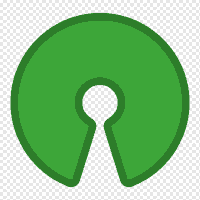
CommaFeed
- 0 ratings

Google Reader inspired self-hosted RSS reader.
Self-host this app for $0.99/mo only!
Sources for CommaFeed.com.
Google Reader inspired self-hosted RSS reader, based on Dropwizard and AngularJS. CommaFeed is now considered feature-complete and is in maintenance mode.
Android apps: News+ extension
Browser extensions: Chrome - Firefox - Opera - Safari
mkdir commafeed && cd commafeed
wget https://github.com/Athou/commafeed/releases/download/2.6.0/commafeed.jar
wget https://raw.githubusercontent.com/Athou/commafeed/2.6.0/config.yml.example -O config.yml
vi config.yml
java -Djava.net.preferIPv4Stack=true -jar commafeed.jar server config.yml
git clone https://github.com/Athou/commafeed.git
cd commafeed
./mvnw clean package
cp config.yml.example config.yml
vi config.yml
java -Djava.net.preferIPv4Stack=true -jar target/commafeed.jar server config.yml
CommaFeed 2.0 has been rewritten to use Dropwizard and gulp instead of using tomee and wro4j. The latest version of the 1.x branch is available here.
For storage, you can either use an embedded file-based H2 database or an external MySQL, PostgreSQL or SQLServer database. You also need the Java 1.8+ JDK in order to build the application.
To install the required packages to build CommaFeed on Ubuntu, issue the following commands
# if openjdk-8-jdk is not available on your ubuntu version (14.04 LTS), add the following repo first
sudo add-apt-repository ppa:openjdk-r/ppa
sudo apt-get update
sudo apt-get install g++ build-essential openjdk-8-jdk
# Make sure java8 is the selected java version
sudo update-alternatives --config java
sudo update-alternatives --config javac
Clone this repository. If you don't have git you can download the sources as a zip file from here
git clone https://github.com/Athou/commafeed.git
cd commafeed
Now build the application
./mvnw clean package
Copy config.yml.example to config.yml then edit the file to your liking.
Issue the following command to run the app, the server will listen by default on http://localhost:8082. The default user is admin and the default password is admin.
java -Djava.net.preferIPv4Stack=true -jar target/commafeed.jar server config.yml
You can use a proxy http server such as nginx or apache.
Files for internationalization are located here.
To add a new language, create a new file in that directory.
The name of the file should be the two-letters ISO-639-1 language code.
The language has to be referenced in the src/main/app/js/i18n.js file to be picked up.
To create a theme, create a new file src/main/app/sass/themes/_<theme>.scss. Your styles should be wrapped in a #theme-<theme> element and use the SCSS format which is a superset of CSS.
Don't forget to reference your theme in src/main/app/sass/app.scss and in src/main/app/js/controllers.js (look for $scope.themes).
See _test.scss for an example.
Steps to configuring a development environment for CommaFeed may include, but may not be limited to:
git clone https://github.com/Athou/CommaFeed into some folder to get the project files.java -jar lombok.jar as an administrator if your eclipse installation is not in your home folderserver config.dev.yml under "Program arguments" in the "Arguments" tab for the Java Application setting "CommaFeedApplication"gulp dev on Unix based systems or gulp.cmd dev in Windows.Copyright 2013-2016 CommaFeed.
Licensed under the Apache License, Version 2.0 (the "License"); you may not use this work except in compliance with the License. You may obtain a copy of the License in the LICENSE file, or at:
http://www.apache.org/licenses/LICENSE-2.0
Unless required by applicable law or agreed to in writing, software distributed under the License is distributed on an "AS IS" BASIS, WITHOUT WARRANTIES OR CONDITIONS OF ANY KIND, either express or implied. See the License for the specific language governing permissions and limitations under the License.
Please login to review this project.
No reviews for this project yet.
Powerful RSS aggregator, able to transform and send article…
Generate RSS/ATOM feeds for websites which don't have one.
Your very elegant RSS reader.
Comments (0)
Please login to join the discussion on this project.